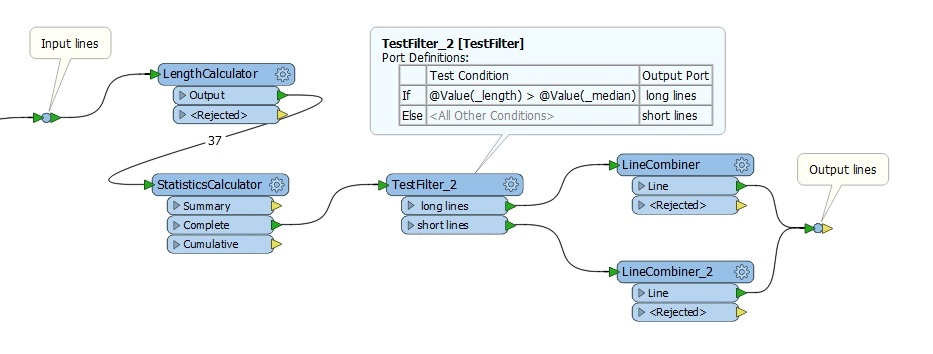Hi All
I am working on an electric network as input where line segments sometimes join. The end vertices lie on top of each other. I have used the Snapper and LineCombiner to combine lines where only two lines meet. The LineCombiner transformer can however not combine lines where more than two lines meet.
It does not really matter what two lines are combined, although it would make sense to join the longest segments. The line segments all have the same attribute values (ie the same voltage and reticulation name). The reason for wanting this is to make the output dataset as small as possible, as there is so much unnecessary duplication with the attributes for small pieces of line being exactly the same.
Is there a way to combine two lines where more than two meets?
Hope someone can help.













